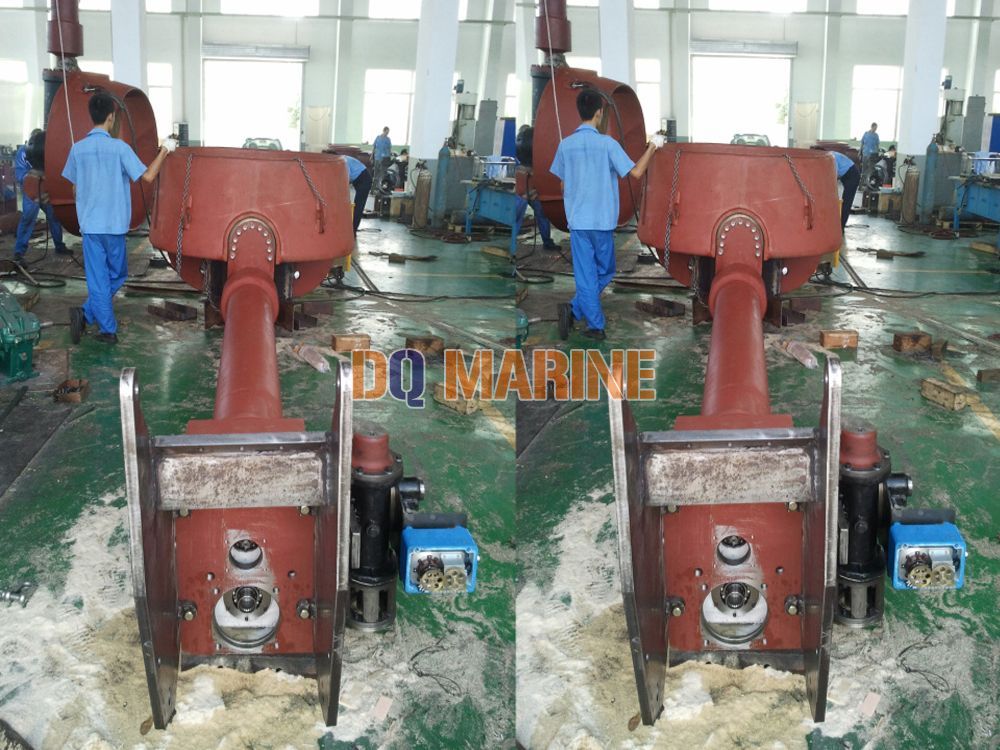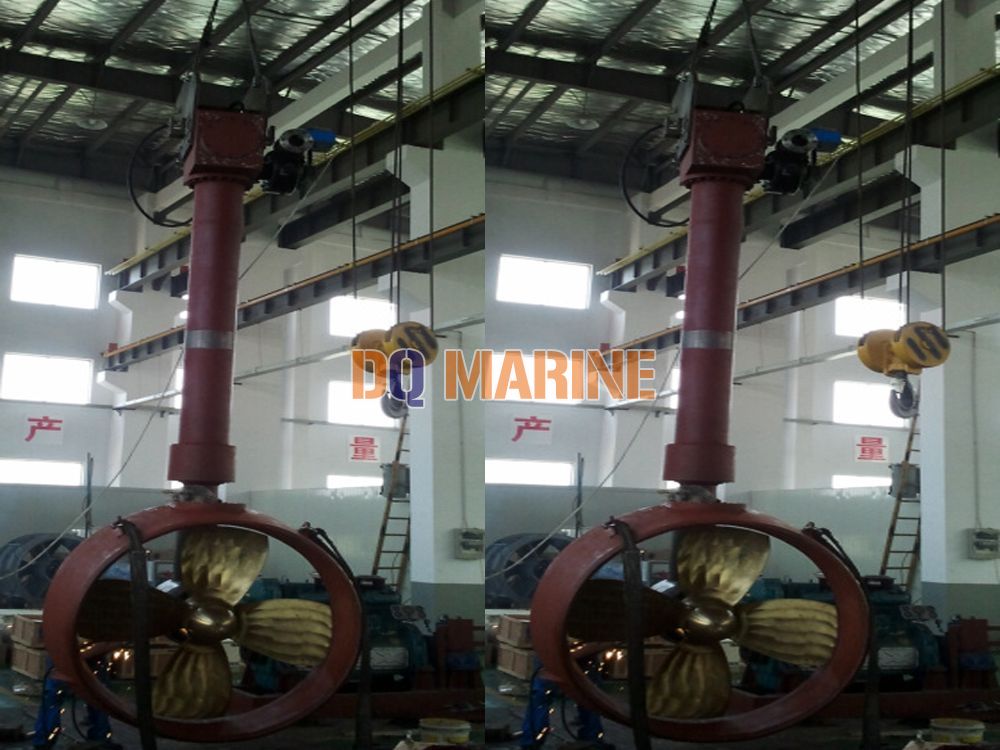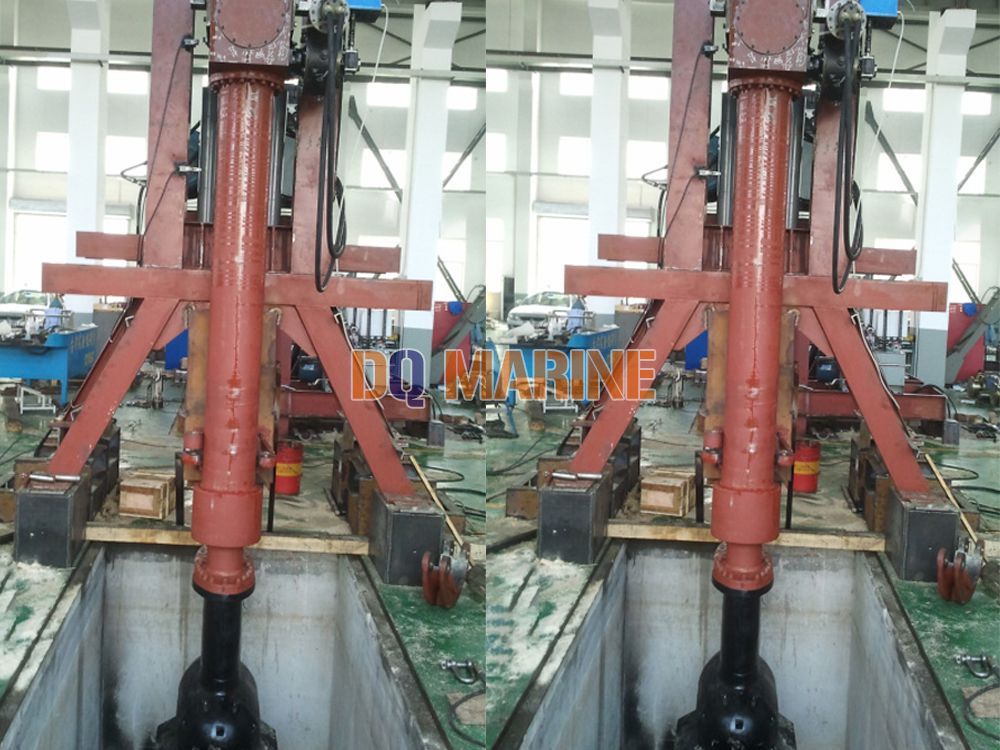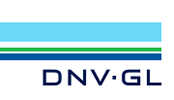Srandard rudder propeller:
Srandard rudder propeller
The rudder propeller replaces the traditional rudder and propeller combination propulsion mode with the combination of paddle and rudder. The rudder propeller body can be rotated 360° in any direction in the horizontal plane, which can provide all-round thrust and maximize the maneuverability of the ship.
Technical Specification
| Type | RP20 | RP42 | RP85 | RP168 | ||
|
Maximum input power(kw) HP |
45 | 100 | 210 | 300 | ||
| 61 | 135 | 285 | 400 | |||
| Maximum input torque (Sf=1) | 200 | 420 | 850 | 1675 | ||
| Maximum input speed | 2300 | 2500 | 2350 | 2000 | ||
| Reduction ratio | Ⅰ | 1.93 | 2.5 | 2.68 | 3.46 | |
| Ⅰ up | 1.7 | 1.64 | 1.65 | 1.53 | ||
| Ⅰ down | 1.13 | 1.52 | 1.62 | 2.26 | ||
| Propeller diameter | Max. | 500 | 800 | 950 | 1150 | |
| Min. | 700 | 900 | ||||
| PAL length* | Max. | 2250 | 2800 | 2800 | 4250 | |
| Min. | 350 | 875 | 980 | 1400 | ||
| Weight (including paddles, oil, and PAL minimum) | 65 | 190 | 300 | 1370 | ||
| PAL adds weight(kg) for every 100mm increase | 8 | 9 | 20.4 | 40 | ||
PAL is the vertical distance of the centerline of the propeller centerline propeller centerline.
The ability of the rudder propeller to transmit power is determined by the maximum input torque of the rudder propeller. The use of the rudder propeller, the type of prime mover and the type of ship may affect the actual input torque. Please consult with our technicians before selecting the rudder propeller model. The rated output torque Mp of the prime mover (usually a diesel engine, hydraulic motor or electric motor) is an important parameter for the correct selection of the rudder propeller. The calculation formula is as follows:
Mp≤Sf·MR
Mp=
Sf=fz×fl×fo×fs
Mp: prime mover output torque
Sf: Rudder safety factor
MR: Rudder input torque
N: prime mover output power
N: rudder paddle input speed
Each rudder propeller has its specific allowable design torque as required by the usual work safety factor. According to our many years of work experience, this design torque can not be used as the final basis in the selection of the rudder paddle, but must be carefully considered for a variety of service conditions. Therefore, the usual torque design safety factor Sf must be selected as follows:
The safety factor of the rudder propeller of our company. generally meets the requirements of the normal navigational regulations of the classification society. The safety factor for rudder propellers with ice reinforcement should be between 0.33-0.67. Please inform our company for the selection of the rudder slurry with special installation requirements.
| RP280 | RP330 | RP550 | RP1470 | RP1950 |
| 480 | 620 | 920 | 1250 | 1650 |
| 650 | 843 | 1250 | 1700 | 2244 |
| 2800 | 3300 | 5423 | 14740 | 19500 |
| 1800 | 1800 | 1800 | 1000 | 1000 |
| 3.96 | 4.04 | 5.059 | 3.257 | 3.58 |
| 1.63 | 1.53 | 1.647 | 1.286 | 1.286 |
| 2.43 | 2.64 | 3.071 | 2.533 | 2.79 |
| 1550 | 1500 | 1800 | 2100 | 2300 |
| 1250 | ||||
| 4750 | 5000 | |||
| 1750 | 1700 | 2600 | 2800 | 3000 |
| 2100 | 2800 | 5820 | 11000 | 16500 |
| 40 | 45 |
Sf = 0.75: continuous operation for 24 hours at full power (eg container ship, push boat, etc.)
Sf=0.90: The gap is fully loaded (such as the port for tugboats, floating cranes)
Sf=1.00: auxiliary devices (such as lateral propulsion, dynamic positioning, etc.)
| FZ | Annual working hours |
| 1 | Less than 3000 hours |
| 0.95 | From 3000 hours to 5000 hours |
| 0.9 | More than 5000 hours |
| FL | Load condition |
| 1 | Intermittent load |
| 0.95 | Less than 50% full load |
| 0.9 | Continuously loaded |
| FO | Overload condition |
| 1 | Host is not overloaded |
| 0.95 | Host overload 10% |
| 0.9 | Host overload greater than 10% |
| FS | Work area |
| 1 | Dynamic positioning |
| 1 | Inland waterway |
| 0.95 | Inland waterway with water depth restrictions |
| 0.95 | Coastal limited area work |
| 0.9 | Infinite navigation work |








